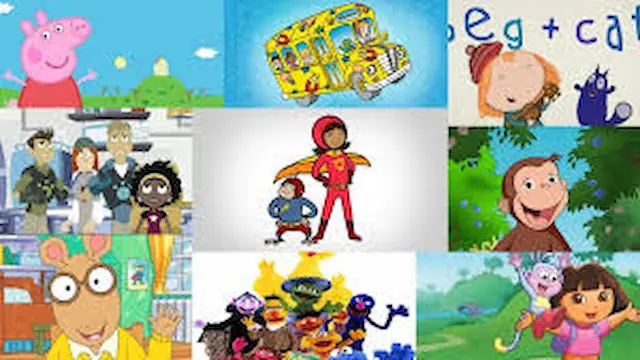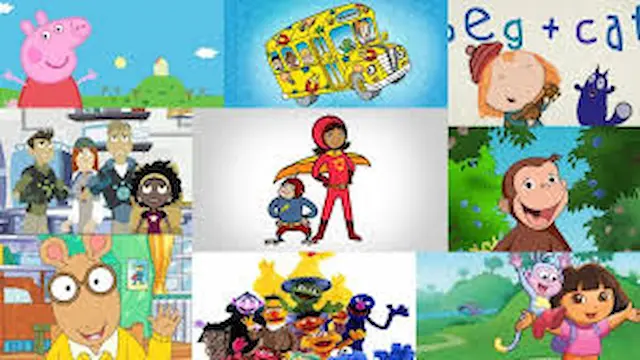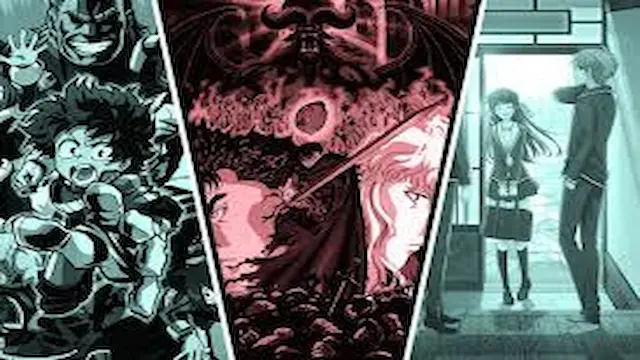Cartoons have been a cherished part of childhood and culture for decades, evolving significantly from their early days on television to the current era dominated by online streaming. This evolution reflects broader technological, cultural, and social changes, reshaping how audiences consume and interact with animated content. In this blog post, we’ll explore the journey of cartoons from the golden age of TV to the digital age of streaming, examining key milestones, influential series, and the impact of technology on animation.
The Golden Age of TV Cartoons
The history of TV cartoons dates back to the 1940s and 1950s, a period often referred to as the Golden Age of American animation. During this time, animated series primarily targeted children and became a staple of Saturday morning television. Iconic characters like Bugs Bunny, Mickey Mouse, and Tom and Jerry captured the hearts of millions. These cartoons were characterized by their hand-drawn animation, slapstick humor, and simple yet engaging storylines.
Shows like “The Flintstones” (1960) and “The Jetsons” (1962) were among the first primetime animated series, proving that cartoons could appeal to both children and adults. “The Flintstones,” in particular, was groundbreaking as it tackled social and cultural issues through the lens of a prehistoric family, blending humor with commentary.
The Rise of Cable TV and Cartoon Networks
The 1980s and 1990s marked a significant shift in how cartoons were produced and consumed. The advent of cable television brought specialized channels dedicated entirely to animated content. Nickelodeon, Cartoon Network, and Disney Channel emerged as powerhouses, each offering a diverse array of shows catering to different age groups and tastes.
Nickelodeon’s “Rugrats” (1991) and “Hey Arnold!” (1996) explored the lives of children with depth and nuance, while Cartoon Network’s “Dexter’s Laboratory” (1996) and “The Powerpuff Girls” (1998) introduced viewers to unique, quirky characters and innovative storytelling. Disney Channel’s “DuckTales” (1987) and “Kim Possible” (2002) combined adventure and comedy, expanding the boundaries of animated narratives.
During this period, animation studios began experimenting with different styles and techniques, including computer-generated imagery (CGI). The success of Pixar’s “Toy Story” (1995) demonstrated the potential of CGI in storytelling, setting the stage for future advancements in animation.
The Digital Revolution: Online Streaming Emerges
The early 2000s witnessed the dawn of the digital age, fundamentally altering how people accessed media. The rise of the internet and the proliferation of high-speed connections made it possible to stream content online, bypassing traditional broadcast and cable networks. Platforms like YouTube, launched in 2005, allowed independent creators to share their animations with a global audience, democratizing content creation and distribution.
Simultaneously, major studios and networks began exploring online streaming. Netflix, initially a DVD rental service, transitioned to streaming in 2007 and gradually expanded its library to include animated series. The launch of Netflix Originals in 2013 marked a turning point, with the platform producing its own content, including animated shows.
The Streaming Era: Diversity and Innovation
The streaming era has revolutionized the world of cartoons, offering unprecedented access to a vast array of content. Services like Netflix, Hulu, Amazon Prime Video, and Disney+ provide extensive libraries of both classic and original animated series, catering to diverse tastes and demographics.
Revival of Classics
One notable trend in the streaming era is the revival of classic cartoons. Nostalgia-driven reboots and sequels have found new life on streaming platforms. “DuckTales” (2017) returned with a modern twist, appealing to both new audiences and fans of the original series. Similarly, “She-Ra and the Princesses of Power” (2018) reimagined the 1980s classic for a contemporary audience, emphasizing inclusivity and complex storytelling.
Original Content and Diverse Voices
Streaming platforms have also become incubators for original animated content, allowing creators to push boundaries and explore unique themes. Shows like Netflix’s “BoJack Horseman” (2014) and “Big Mouth” (2017) tackle mature subjects with humor and poignancy, proving that animation can address complex adult themes just as effectively as live-action media.
Moreover, the accessibility of streaming has facilitated the rise of diverse voices in animation. Series like “Steven Universe” (2013) and “Kipo and the Age of Wonderbeasts” (2020) celebrate inclusivity and representation, breaking new ground in terms of characters, stories, and perspectives. These shows resonate with audiences by addressing real-world issues such as identity, acceptance, and social justice through engaging narratives and vibrant animation.
Technological Advancements
Technological advancements have played a crucial role in shaping modern animation. The transition from traditional hand-drawn techniques to digital animation has streamlined production processes, allowing for greater creativity and efficiency. CGI has become more sophisticated, enabling the creation of visually stunning worlds and characters. Virtual reality (VR) and augmented reality (AR) are also beginning to make their mark, offering immersive experiences that blend animation with interactive storytelling.
Additionally, advancements in artificial intelligence (AI) and machine learning are starting to influence animation. AI-driven tools can assist animators in creating realistic movements and expressions, enhancing the overall quality and believability of animated characters.
The Future of Cartoons: What Lies Ahead?
As we look to the future, the evolution of cartoons shows no signs of slowing down. The continuous development of technology and the ever-changing media landscape will undoubtedly bring new opportunities and challenges for animators and creators. Here are a few trends that may shape the future of cartoons:
Interactive and Immersive Experiences
The integration of interactive and immersive elements into animated content is likely to become more prevalent. Choose-your-own-adventure style narratives, where viewers can influence the storyline, are already being explored. This interactivity can deepen engagement and offer personalized experiences.
Cross-Platform Integration
The future of cartoons will likely involve seamless integration across multiple platforms. Animated series might extend their narratives through video games, virtual reality experiences, and even social media interactions, creating cohesive and immersive universes.
Continued Emphasis on Diversity
The demand for diverse and inclusive storytelling will continue to grow. Audiences are increasingly seeking representation and authenticity in the media they consume. This trend will encourage creators to explore new cultural perspectives and tell stories that resonate with a global audience.
Sustainability in Animation
As environmental concerns become more pressing, the animation industry may prioritize sustainable practices. This could involve using eco-friendly materials, reducing energy consumption in production processes, and promoting themes of environmental stewardship within animated narratives.
Conclusion
The evolution of cartoons from TV to online streaming is a testament to the adaptability and creativity of animators and storytellers. What began as simple, hand-drawn shorts has transformed into a diverse and dynamic medium, capable of addressing complex themes and reaching audiences of all ages. As technology continues to advance and cultural landscapes shift, cartoons will undoubtedly continue to evolve, offering new and exciting ways to entertain, educate, and inspire. Whether through nostalgic reboots, groundbreaking originals, or innovative storytelling techniques, the future of cartoons is bound to be as vibrant and imaginative as the characters and worlds they bring to life.



